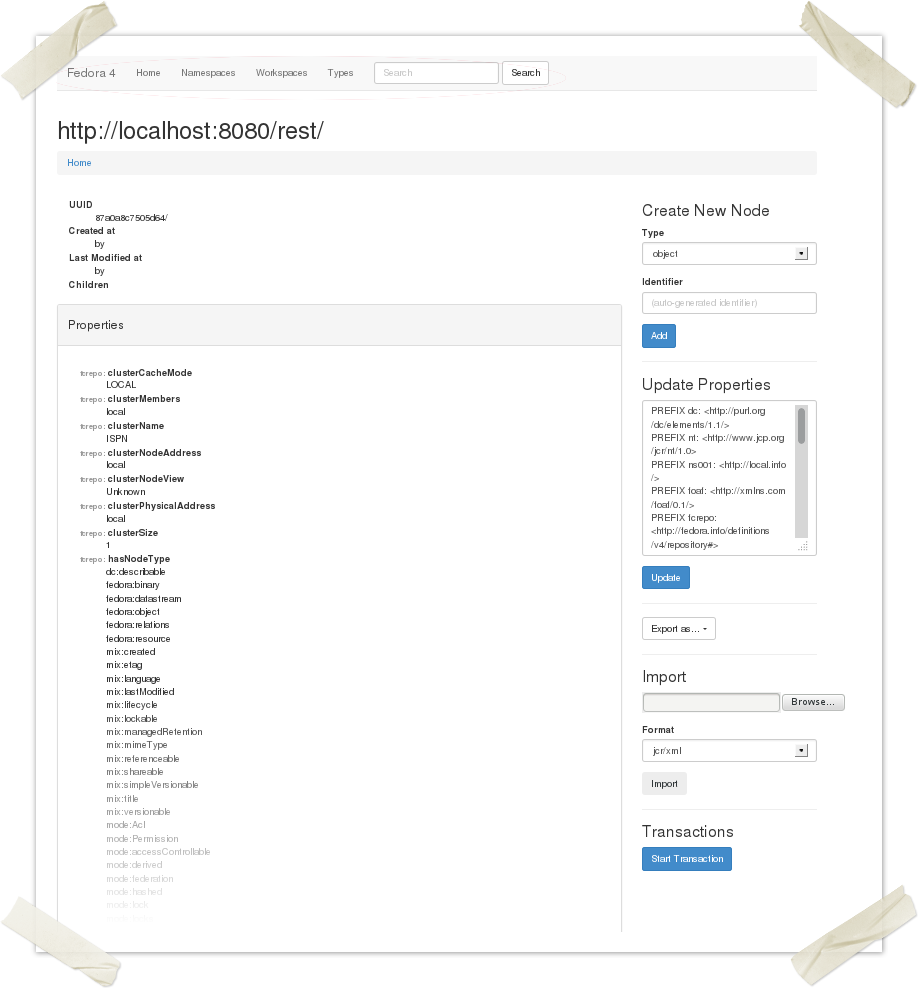Much of the functionality that is exposed through the RESTful HTTP API is also available using an HTML user interface interpreted by your favorite web browser. Whether your request for particular API HTTP endpoints results in an HTML UI or more machine-readable formats is based on content negotiation headers. This tour walks you through the major user interface components when accessing the HTTP API through a web browser.
Home Page / Node View
When you access the root path of the RESTful HTTP API you are presented with a rendering of the root level node of the default workspace within your Fedora repository.
From here you can:
- Ingest new Objects and Datastreams.
- Inspect the properties of Objects and Datastreams.
- Update the properties of Objects and Datastreams.
- Navigate the Repository Hierarchy of Objects and Data-streams.

The user interface is divided into regions.
- Navigation bar (at the top)
- Resource information and navigation (left center)
- Optional resource actions
Navigation Bar
The navigation bar, which appears at the top of each page includes links to the following:
Resource Information
Information about the resource requested (in the case of the home page, this is the root of the default workspace) is displayed below the navigation bar, filling the left two thirds of interface.
- Object Title
If a title (either http://www.w3.org/2000/01/rdf-schema#label or http://purl.org/dc/elements/1.1/title) is available, it is displayed here, otherwise the resource URI is. - Object Path
Fedora 4 is different from Fedora 3 in that there is an innate tree hierarchy to the repository rather than a flat hierarchy. The path (list of ancestors) for the viewed node is presented below the object title. - Featured Properties
Very basic metadata such as the UUID and modification/creation times and users are presented below the object path - Children
Any children that the node has will be listed and linked here. - All Node Properties
All properties of the node are presented here. Hover your mouse over the namespace prefix to see the full namespace.
- Inlined Resources
A subset of properties from the parent node, children nodes are presented below the properties for the subject node. Click on the grayed box to expand the list of properties or the label text to view that resource directly.

